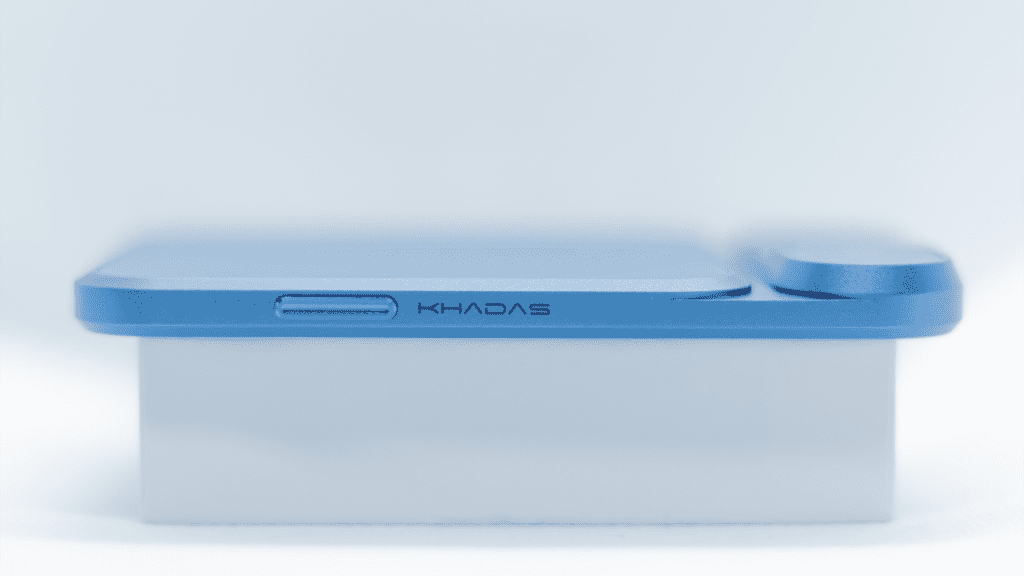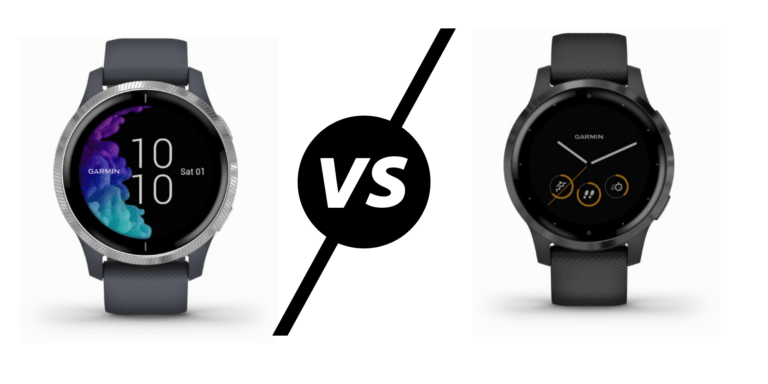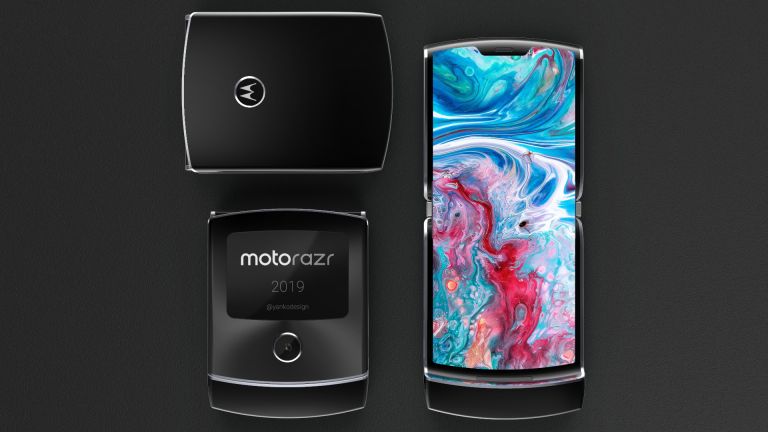Any links to online stores should be assumed to be affiliates. The company or PR agency provides all or most review samples. They have no control over my content, and I provide my honest opinion.
Khadas’ Tea is a brilliant new ultra-slimline high-resolution headphone amplifier designed to work seamlessly with an iPhone 12 or higher.
| Preview | Product | Rating | Price | |
|---|---|---|---|---|

| Khadas Tea Headphone Amplifier, Portable DAC & Magnetic... |
£99.99 | Buy on Amazon |
Specification
- Type: USB DAC + Headphone Amplifier + Bluetooth
- Model: Khadas
- Chipset: Sabre ESS ES9281AC Pro
- Bluetooth: Qualcomm QCC5125
- Amplifier: Amplifier RT6863D (Buffer Stage)
- Frequency range: 20 – 40 000Hz
- Compatibility: PCM up to 32bit/768kHz – DSD up to DSD512
- SNR: 112dB / 116dB
- THD: < 0.0007%
- Output impedance: < 0.3dB
- Battery: 1160 mAh Lithium Polymer Battery
- Battery life: up to 8h
- Size: 95.5mm (l) x 63.8mm (w) x 6.25mm (t-min) / 7.95mm (t-max)
- Weight: 73.5g
- Socket: USB-C
Design

The Tea is a sleek blue steel device only 6.25mm thick. Its minimalistic aesthetic fits seamlessly alongside the iPhone for which it is designed. I say this as the Tea dons the Made for Apple badge, meaning it is explicitly designed to connect with these products. It can be attached directly to any Apple device equipt with their MagSafe technology.
Somehow, Khadas have managed to squeeze a 1160mAh battery within the Tea. This allows for an impressive 8hrs of playback time, just enough to get you through a busy work day.
As part of its impressive design, the Tea can automatically adjust to the resistance of the headphones you’re using. So you’ll always be getting the right power and perfect sound from your headphones.
I was a little sad to see there’s no app to accompany the Tea. The forums confirm that Khadas is currently developing an app, and in August, they claimed to be testing the app. However, as I write this approaching the end of October, there is still no sign of it.
A companion app would be provided for a complex audio device like this. It can help users fine-tune the sound they love with an equaliser and even allow customisation of the hardware buttons present. (I have seen all these features come with smaller, cheaper devices.)

Connectivity
Though its purpose may be obscured at first glance by its unique profile, potentially resembling some pharmaceutical scales or a sci-fi police notepad. The Tea is an ultra-slim high-resolution headphone amp, supporting bit-perfect MQA and Lossless Audio playback.
Khadas’ Tea can be connected to a device of choice by one of two methods. A direct Bluetooth connection or a wired connection, with one of the two 10cm cables provided. Compatible with both Android and Apple devices using a USB Type-C or Lightning cable.
Within Bluetooth settings on the connected device, users can change between two LDAC playback settings: “Optimised for quality” and “Balanced audio and connection quality.” I found the latter option to be the only viable setting, unfortunately. The connection was easily distorted when using the “Optimised for quality setting,” I tested this in an area with low wifi traffic and wifi disabled on the connected device. I imagine this setting as a non-starter in a home with multiple wifi-enabled devices.
Using a wired connection, users can utilise some additional Tea features. When plugged in via the USB Type-C wire, users can charge the Tea via the host device; this feature, sadly, isn’t supported when using the lightning cable. The Tea will also display which audio format of the lossless music you’re listening to via the LED.
Unfortunately, I was unable to test the wired connection of the Tea thoroughly because of loud crackling distortion, which would spontaneously play at seemingly unprovoked moments. This is quite possibly an issue with my Huawei phone. Android devices can occasionally be temperamental with this sort of connection. It is possible that this issue is firmware related, and when the app finally launches, it may be possible that this could resolve the problem via an update.
During the brief chance I did have with the wired connection, I found improved sound quality and a marginal increase in clarity. However, I don’t believe it was a significant enough increase to warrant the inconvenience of having the Tea directly tethered to my phone – the Bluetooth connection is surprisingly good.
Controls & Feedback
On the sides of the Tea are three buttons to control the device and one LED to display feedback to the user on the front bottom right. On the left is a single, smart button, responsible for powering on, powering off, answering and declining calls, hey Siri and reconnecting Bluetooth. It can also be used in conjunction with the opposite buttons, which predominantly work like a volume rocker switch.
The volume up and down buttons can be swapped into rewind and skip buttons, respectfully, by holding the smart button and the volume up button for one second. Alternatively, the user can activate or deactivate the smart charging feature by holding the smart button and the volume down button.
I find having to hold down two buttons to change the mode to skip the song excessive and impractical. Furthermore, the process is made increasingly more irritating by the lack of audio feedback presented by the Tea.
The only feedback sounds made by the Tea are to announce that Bluetooth has been connected or unconnected from a device. In addition, Tea provides feedback for power on, power off, low battery, and Bluetooth pairing mode via the small LED on the front of the device. The Tea is designed to be mounted to the rear of users’ phones, making this an interesting design choice, for sure.
The device will not tell you when it will power off; it will simply gently flash red and then plunge you into silence after an undisclosed amount of time. Also, it automatically turns off after being paused for some time, and it won’t tell you that either.
Price and Alternative Options
| Preview | Product | Rating | Price | |
|---|---|---|---|---|

| Khadas Tea Headphone Amplifier, Portable DAC & Magnetic... |
£99.99 | Buy on Amazon | |

| iFi GO blu – Portable Bluetooth 5.1 DAC/Headphone... |
£199.00 | Buy on Amazon | |

| Qudelix 5K Reference DAC AMP | £102.86 | Buy on Amazon |
The Khadas Tea is available to buy now on Amazon, priced at just under £200.
This puts it a little bit higher than the popular iFi GO Blu , which is currently around £175 or the Qudelix-5K at around £170.
The main advantage the Khadas Tea is the overall design, form factor and MagSafe connectivity.
Sound
Firstly I’d like to be transparent and say I’m not an expert on audio technology. However, as an average consumer to which this product is targeted, I can offer my opinion.
I found the Tea to have a bias towards low-end frequencies and bass. Typically, this wouldn’t bother me as a bassy sound accompanies my usual music taste. However, to utilise the most out of the ESS ES9281AC Pro DAC, I listened to a variety of other genres which displayed some other aspects of the sound produced.
Firstly, I found it very bassy, which seemed to bleed into the mids, creating a muddy sound. In some complex songs, I found this more prevalent. I also thought it had a slight high-end roll-off, presenting a slightly veiled sound. This essentially means the high-end appears muted or tapers off. I was only able to identify this when comparing two different DAC devices. To an average listener, I believe this is entirely acceptable.
Moreover, I found the Tea to lack good sound staging, making everything sound very close, like you’re in a box. This, combined with the lack of high-end clarity, makes for quite a dense sound.
One of the big advantages of this portable DAC is the ability to drive almost any IEM with a maximum output of 165mW at 32 ohms. It should also be able to drive some less demanding headphones.
Final Thoughts
Overall, I don’t mind Khadas’ Tea. Perhaps if I were to own an iPhone 12 or higher, I would have gelled better with the device. However, what it does do, it does pretty well.
The sound profile it produces is very warm and arguably unbalanced. Your average iPhone user wanting to dip their toe into higher-end audio will quite likely love the sound, but people with a more analytical ear with a neutral preference may be disappointed.
I believe that this DAC would greatly benefit from an app with an EQ, allowing users to tweak the audio to their preference.
Khadas Tea DAC Bluetooth Headphone Amplifier Review
Summary
The Khadas Tea is good for your average iPhone owner looking for improved audio quality. It could be a lot better, though. Hopefully, when the app gets launched, this will significantly improve the product, ironing out the minor gripes and hopefully adding a much-needed EQ.
Overall
70%-
Overall - 70%70%
Pros
- Slim design with MagSafe connection is ideal for iPhone users needing a portable DAC
- LDAC over Bluetooth provides a boost in sound quality
- Warm sound profile should suit most peoples tastes
Cons
- Connectivity issues using wired connection on Android
- High-quality LDAC prone to popping/interference
- A bit warm sounding for audiophiles
- No App (yet)
I’m Ted Culshaw, a dedicated professional adept in the realm of film, photography, and 3D design. As the brother of the chief editor at Mighty Gadgets, James, I’ve had the privilege of overseeing the reviews for a wide range of 3D printers and creative products, covering everything from photography to lighting. My academic background in film and photography, coupled with a brief stint in the TV industry, has provided me with a rich foundation in these fields, which I leverage to consistently deliver high-quality reviews.
In my current role at my father’s bespoke kitchen business, Culshaw Kitchen Makers, I am responsible for creating many of the 3D designs and CNC cutting, thereby directly contributing to the beauty and functionality of our handmade kitchens. I take immense pride in my work, and I am constantly seeking ways to improve and innovate.
Aside from this, my passion for photography and filmography extends beyond my professional life. I regularly offer freelance services to local businesses, using my skills to help them elevate their visual presence and narrate their unique stories.
At heart, I am a passionate professional who believes in the transformative power of creative design and visual storytelling. Whether it’s through reviewing the latest 3D printer or crafting a bespoke kitchen design, I am committed to delivering excellence in all my endeavours.
You can find me on Instagram
Last update on 2025-07-18 / Affiliate links / Images from Amazon Product Advertising API








